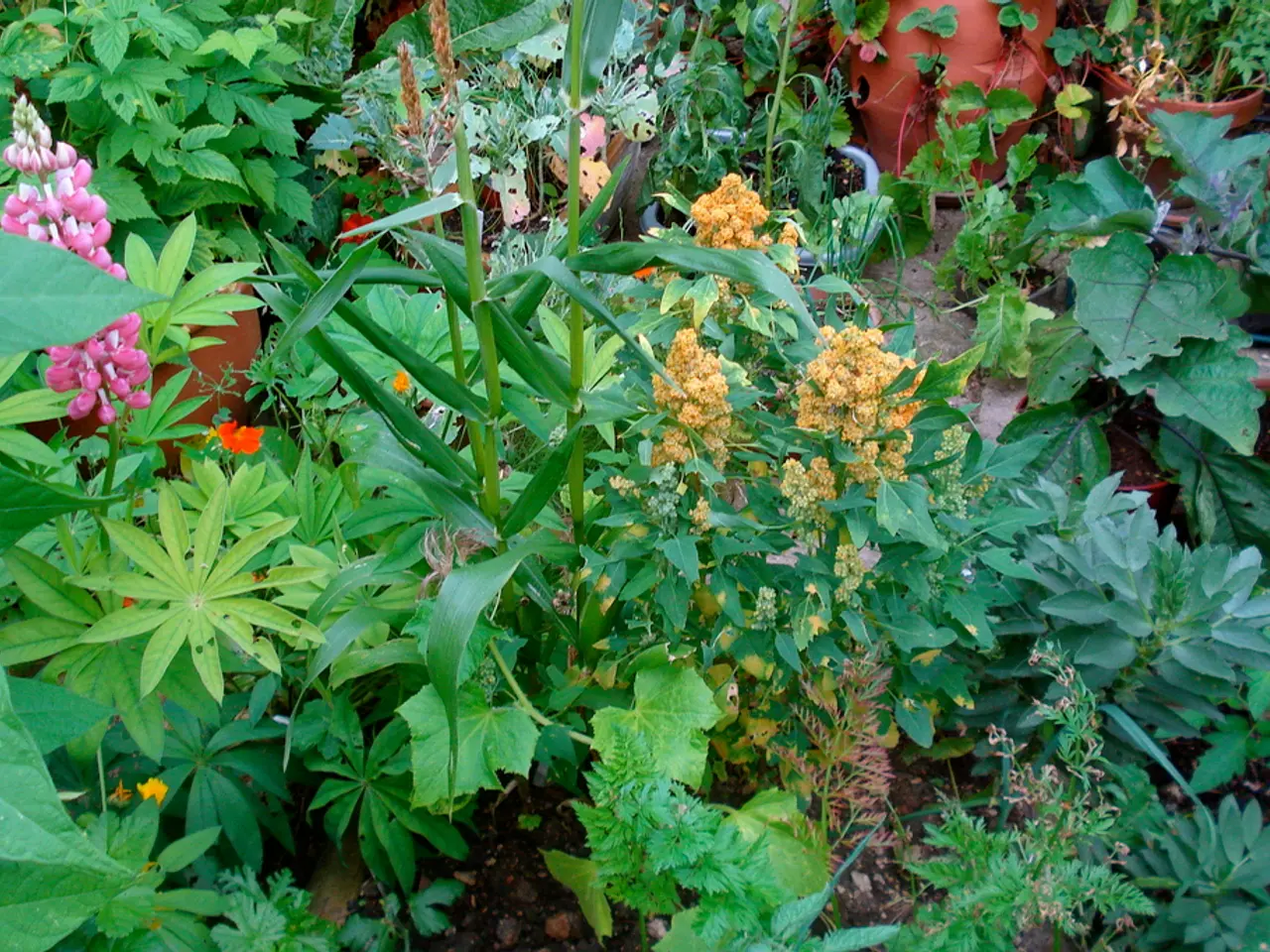Strategies and Insights for Efficiently Organizing a Vegetable Garden in a Greenhouse
Maximizing Your Greenhouse Garden: A Guide to Successful Growing
In the world of gardening, a greenhouse offers a unique opportunity to extend the growing season and nurture a diverse array of plants. To make the most of your greenhouse space, consider these best practices for layout, succession planting, companion planting, vertical growing, container gardening, and hydroponics.
Greenhouse Layout
To make the most of your greenhouse real estate, plan your layout thoughtfully. Utilize tables or shelving to elevate plants, leaving floor space for larger plants or equipment. Ensure proper temperature and humidity management through the use of thermometers, hygrometers, and ventilation systems. Group plants with similar environmental requirements together to simplify management and optimize conditions.
Succession Planting
Planning for continuous harvests is key to a thriving greenhouse garden. Plant different crops at intervals, allowing for a constant supply of fresh produce throughout the year. Rotate crops to prevent depletion of specific nutrients and reduce pest and disease issues. Keep detailed records of planting and harvest dates to refine future planting schedules.
Companion Planting
Companion planting can make the most of available space in a greenhouse. Plant complementary crops together to enhance growth, deter pests, or improve soil health. Be mindful of incompatible plants that may compete for resources or increase pest pressure.
Vertical Growing
Vertical growing can help maximize space and reduce floor usage. Use trellises, arbors, or wall-mounted systems to grow vining plants vertically, maintaining air circulation and reducing the risk of fungal diseases.
Container Gardening
Container gardening can be used in addition to soil growing in a greenhouse. Use high-quality potting soil to ensure optimal drainage and nutrient availability. Monitor watering needs closely, as containers can dry out quickly. Use self-watering containers if possible.
Hydroponic Gardening
Hydroponics is an excellent option for a greenhouse garden, especially when the greenhouse does not have soil but a solid floor. Ensure precise delivery of nutrients through hydroponic systems, which can enhance plant growth and yield. Regularly inspect and maintain hydroponic systems to prevent clogging and maintain optimal water flow. Adequate aeration and circulation within the hydroponic system are crucial to prevent root rot and promote healthy root development.
Tropical Plants and Seasonal Adaptations
Tropical plants like figs and lemons love the greenhouse in the summer but need to be brought into a frost-free or cool space in winter. Cucumbers thrive in Kratky method hydroponics, as this method helps alleviate their thirsty nature.
Biohacking Techniques
Consider using biohacking techniques like climate batteries to naturally regulate temperature extremes in your greenhouse. This can significantly enhance the efficiency and productivity of your greenhouse operations.
By following these practices, you can create a thriving greenhouse garden that provides fresh produce and beautiful flowers all year round. Happy gardening!
- In a cold climate, a greenhouse provides the perfect environment for planting diverse crops year-round, with hydroponics being an excellent option for solid-floor greenhouses.
- For an efficient use of space, consider vertical growing methods using trellises and container gardening with high-quality potting soil to ensure adequate drainage and nutrient availability.
- To optimize growth and yield, group plants with similar environmental requirements together and maintain precise nutrient delivery through hydroponic systems, while also ensuring adequate aeration and circulation.
- Succession planting allows for continuous harvests, with planting and harvest dates carefully recorded to refine future planting schedules.
- Companion planting offers multiple benefits, from enhanced growth to pest deterrence and improved soil health, but it is essential to avoid incompatible pairings.
- To expand your garden lifestyle, maximize your greenhouse environment by utilizing biohacking techniques like climate batteries to naturally regulate temperature extremes and enhance productivity.




